Humanity as Heritage. Dialogue between Le Corbusier and Anish Kapoor
This weekend, despite the darkness of the events and the brutality of the coups d'état, UNESCO, meeting in Istanbul, listed 17 of Le Corbusier's architectural works as World Heritage Sites. Sometimes there's good news. This is undoubtedly one of them.
Last December, we took advantage of our last working day before the holidays to share a meal and a visit to the Couvent de la Tourette with the whole Lyon team. It was the last day of the Anish Kapoor exhibition in this masterpiece by the Franco-Swiss master of modernist architecture. A unique opportunity to visit this haven of peace through a dialogue between art and architecture.
The Tourette convent
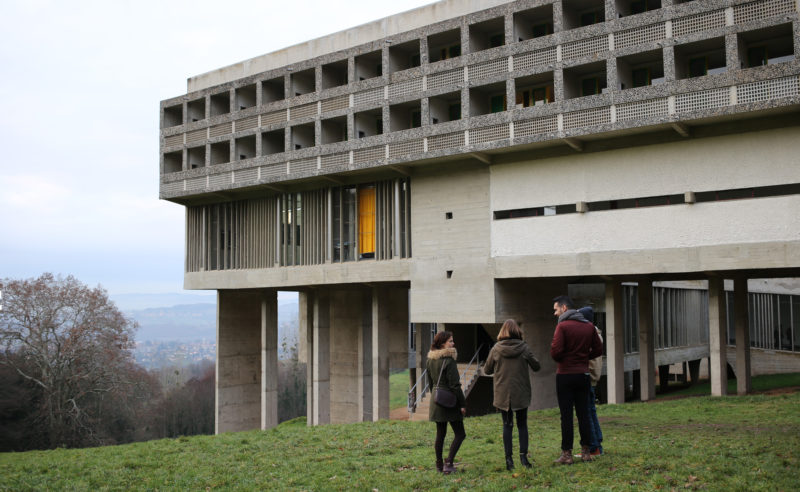
Built in the second half of the 1950s, this concrete structure is one of Le Corbusier's major works.
Although an atheist and communist, the father of the modulor first studied the way of life of the brothers. A life organized around study and prayer. He therefore designed living and working spaces adapted to their needs. For example, the cloister is perched on the roof of the building, invisible to visitors as it is dedicated to meditation. The only vegetation to be found there is wild, modestly planted by the wind and the birds, although it is said that a rebellious brother has since planted a few tomato vines... probably to add a touch of red himself!
The building is designed not to rise above the skyline or stand out in the landscape, so the general plan starts from the top and not from the ground. The natural slope of the land was respected, denoting, despite the quest for originality, a form of humility.
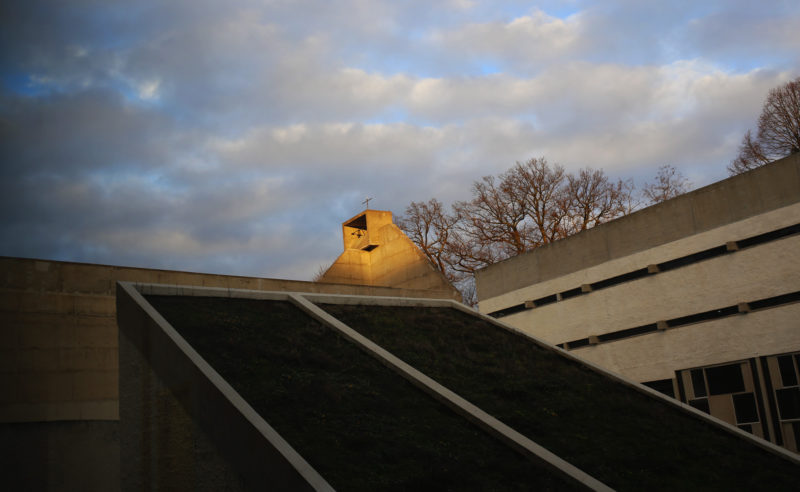
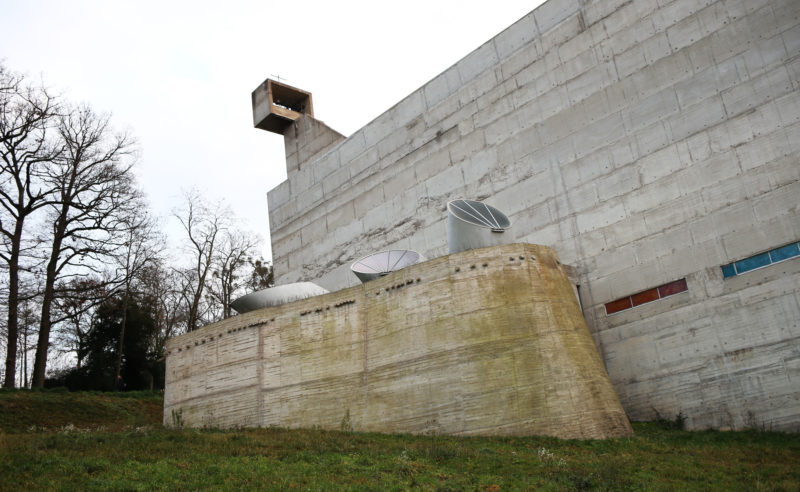
Note the 3 light cannons. From the outside, naughty minds will think that these are poorly fitted ventilation ducts! You'll see below that it's actually a kind of multicolored sundial... but shhh... you have to go inside to understand... let's continue the tour...
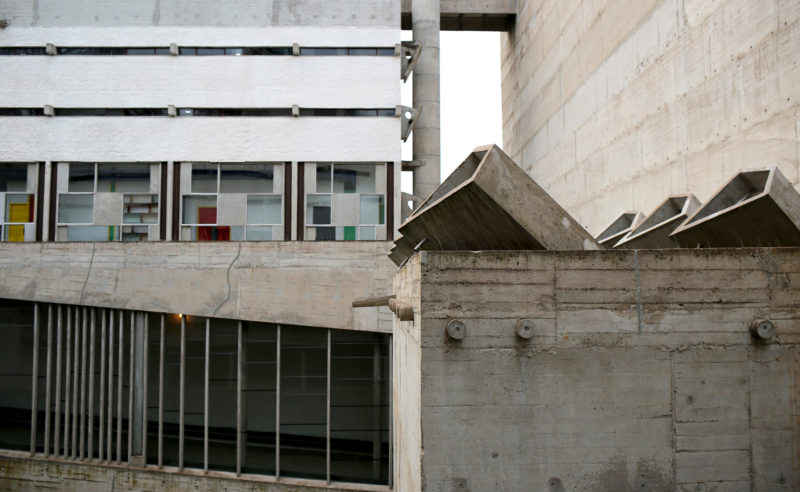
Anish Kapoor at Le Corbusier
It was an exhibition "outside the walls" of the Lyon Biennial of Contemporary Art. Hors les murs, because the convent is located 30km from Lyon, in the commune of Éveux.
True to its tradition of exchange, sharing and reflection, the Dominican community has long opened its doors to contemporary art. Exhibitions by François Morellet, Philippe Favier and Anne et Patrick Poirier are just a few examples.
"Fifty years ago, the Dominican friars had the audacity to call on Le Corbusier, and we're continuing this tradition," explains Brother Marc Chauveau, in charge of cultural programming, before recalling that his order has always maintained close relations with contemporary artists, as was the case with the magazine L'Art sacré, founded in the 1950s.
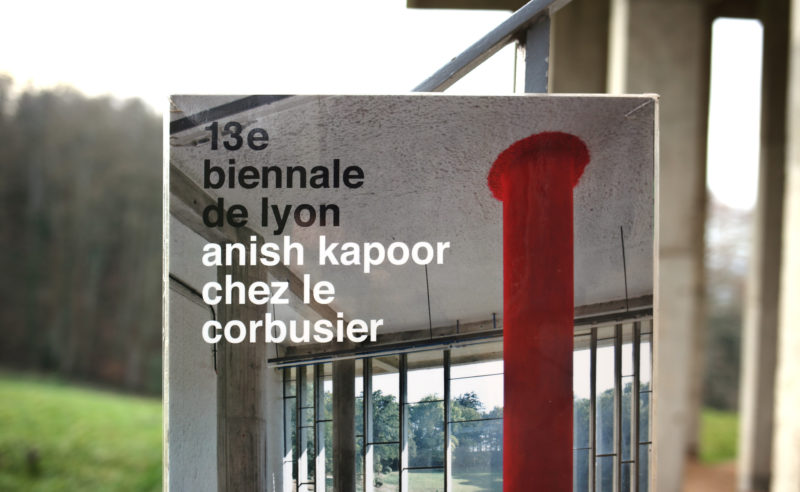
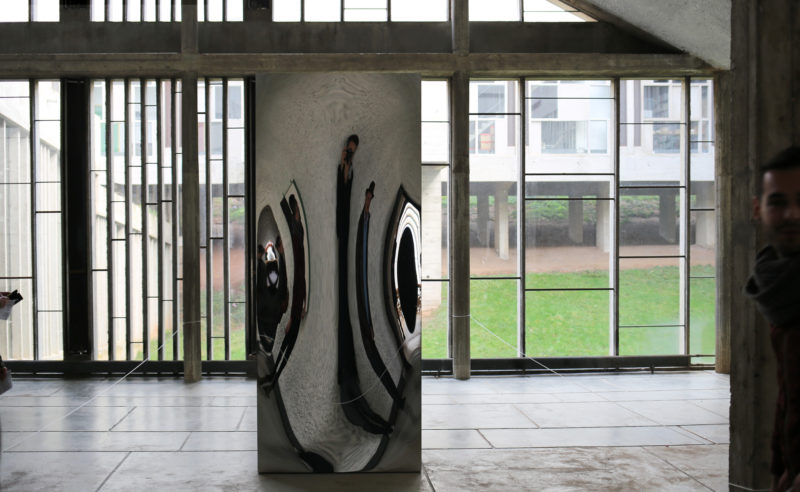
The orthogonality and rhythm of the bay windows are reflected in Anish Kapoor's immense mirror work. Suddenly, the space seems to distort, and the landmarks skilfully traced out by the architect are twisted. The space becomes almost gothic, as arches seem to surround us. Yet when our gaze regains its reason, we are faced with a rectangular parallelepiped. As rectangular as it gets.
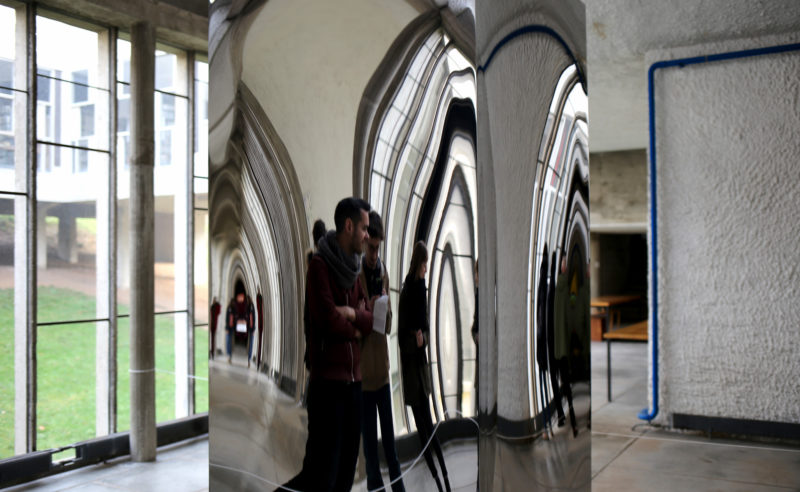
It will take the strength of an overseas blue pipe to pull our gaze away from this lark. Here, color seems functional, with blue indicating cold water, red hot water and black wires for electricity. Everything is legible and apparent, like the motto of the Dominican order, which is "veritas". The Centre Pompidou by Renzo Piano and Richard Rogers inevitably comes to mind. Yet Le Corbusier was 20 years ahead of his time.
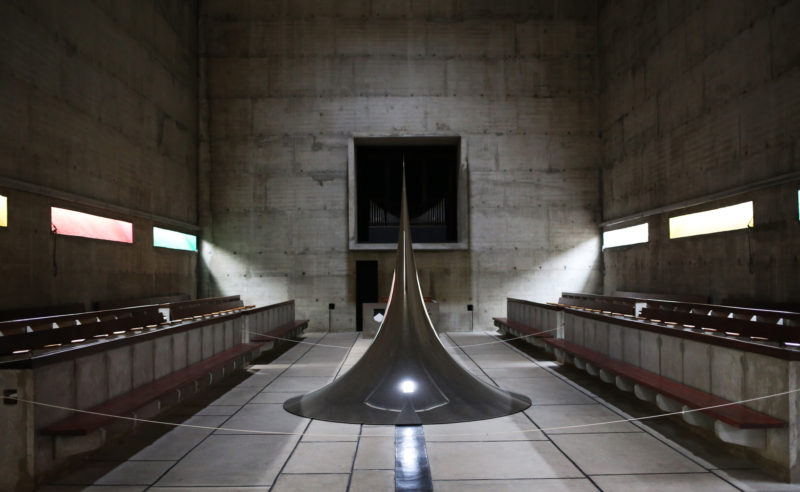
In preparation for this exhibition, the Anglo-Indian artist came to sleep at the convent. As a simple visitor. In fact, I would like to take this opportunity to point out that it is possible to spend one or more nights in the building for between €34 and €50 (including meals).
It was after this visit that Anish asked himself the question of which work to choose. His first response was disconcertingly humble: "It's all there, there's nothing to add... the building itself is a sculpture! "
Finally, Anish Kapoor chose Spire 4, a reflective cone with a very tapered tip, capturing light on earth. The work gives the space a new reading. The geometry of the building dialogues with this mirror. What the photo above doesn't tell us is that the top of the church rises to a height of some thirty meters, and only a tiny skylight lets in the light, which then seems to flow down the length of Kapoor's sculpture.
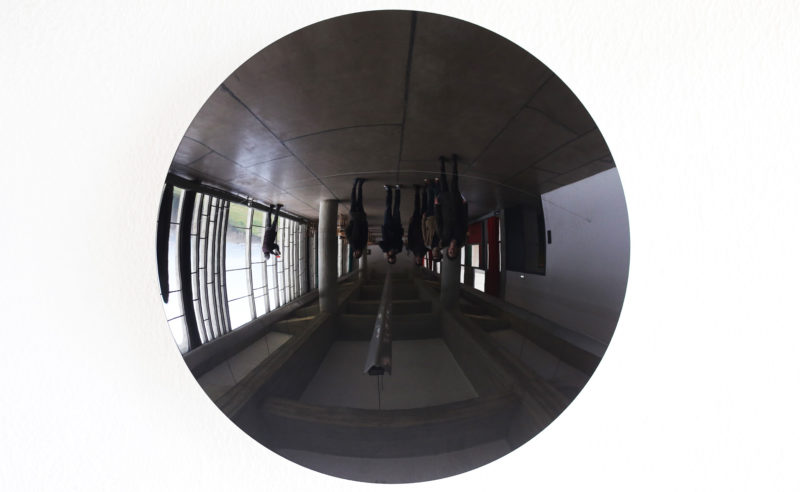
In the refectory, a huge bull's-eye changes our perception of the world, revealing hidden dimensions. From memory, this work should be 2.5m in diameter. By shifting your gaze by 2cm, the space seemed to shift by 2m. A striking effect!
And then, how could we not think of Jan Van Eyck's painting of "Époux Arnolfini", except perhaps that it's the viewer, not the painter, who is at the center of this giant self-portrait. Other, more discreet works lurk in the nooks and crannies of the building, such as this gilded polymorphic mirror (below), like a useless safety mirror.
Other, more recent works occupy the chapter room and upper floor. Wax spinning tops driven into the wall, red silicone sculptures evoking the violence of raw flesh. Here, it is no longer space that is distorted, but Anish Kapoor's raw materials responding to Le Corbusier's raw materials.
When I saw this work in Anish Kapoor's studio last year, I was caught between a feeling of repulsion and attraction," says Dominican friar Marc Chauveau, "it is the embodiment of this tension between two poles, carnal and spiritual, between which we are constantly caught."
Anish Kapoor's work is also rooted in color, echoing the work of Le Corbusier.
Le Corbusier considered color to be an element of balance that should make the white of raw concrete sing. His preferred colors are those of the Modernists, De Stijl and others, bold primary colors that he uses scientifically and systematically on the facades of his buildings.
Indeed, it's in the church that color expresses itself most powerfully. Yet here, color is not direct. The space is colored mainly by three light cannons, each painted white, red and yellow on the inside. Each monumental cylinder is tilted at a different angle, offering a unique alchemy of color depending on the time of day and the season, sometimes conducive to calm, sometimes exhilarating with passion.
In fact, the magic comes from the contrast between color and silence. We see a silent symphony. This musicality is not surprising when you consider that Le Corbusier's assistant at the time was Iannis Xenakis, who went on to become an immense composer of contemporary music, famous among other things for having introduced probabilities into musical composition.
Below, images taken during the summer of 2010, on a day when the much more powerful sun flooded space...
Even the brothers' kitchen is nice. Simple, functional and "yellow"! As if to illuminate this deeply earth place with an energetic sunshine.
The devil is in the details
Around the corner from the refectory, facing the huge picture windows, stands one of the finest examples of furniture design I've ever seen. Yet the Swiss master had nothing to do with it, except through his intellectual heritage. In 1997, the Dominican community commissioned British designer Jasper Morrison (b. 1959) to rethink the furniture in the refectory. Echoing the commission from the Dominican father who had asked Le Corbusier to "house a hundred hearts, a hundred bodies in silence", the English designer conceived this famous chair conducive to silence and concentration. "You might ask... Well, I'll let you take a look at the photos below and find out for yourself... you'll see it's really sneaky!
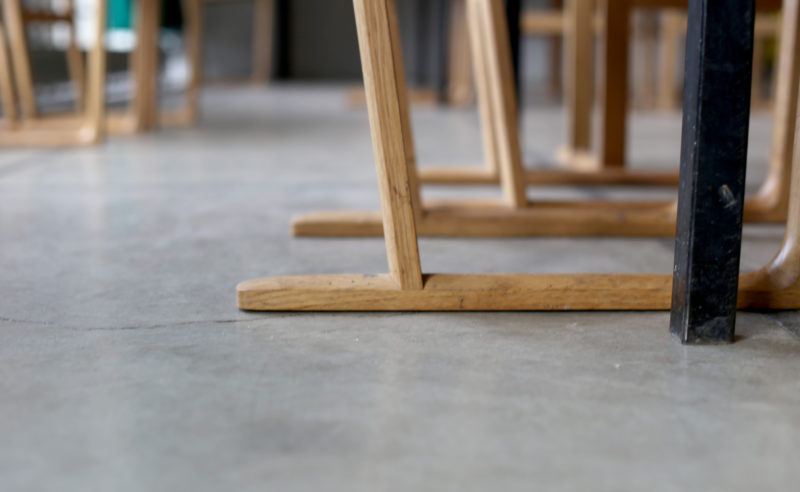
In fact, the definition of the word design can be found in this tiny appendage of wood on the back of this chair's legs.
"Drawing by design"... this is how Jasper Morisson reinvents the chair, taking away the idle possibility of swinging on it. What in other places and times would be experienced as a deprivation of freedom by a fifth-grade dunce is here an intervention in perfect harmony with this place of silence and spiritual concentration. And since the devil is in the details... let's cut him loose!
Share this post:

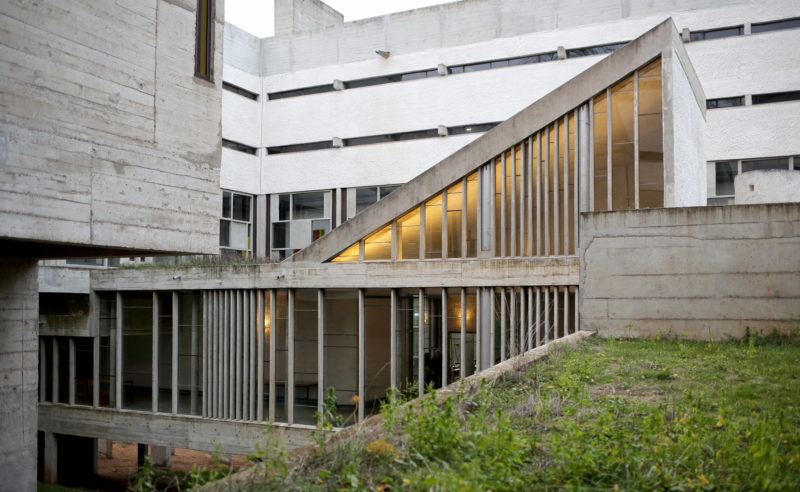
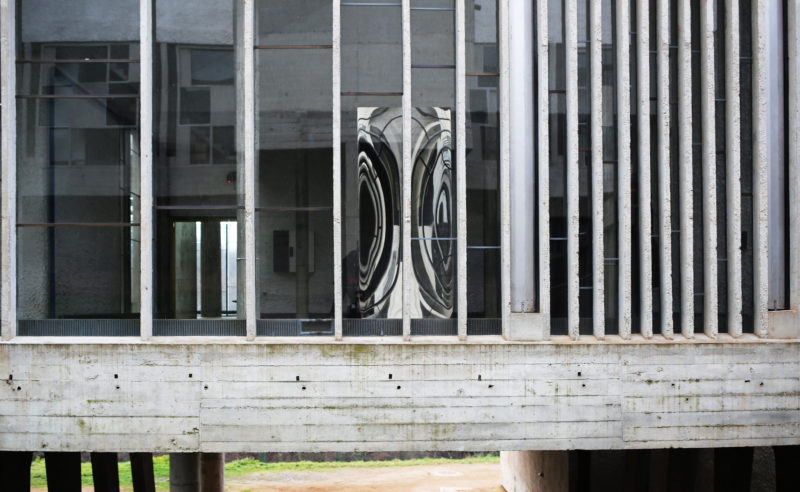
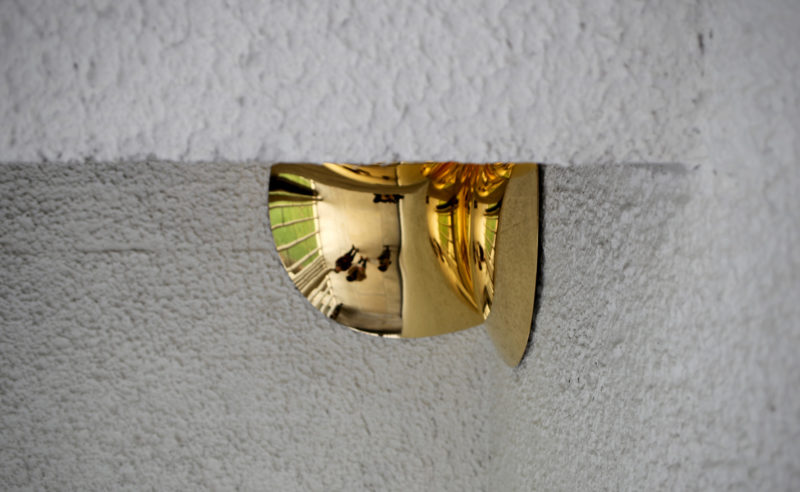
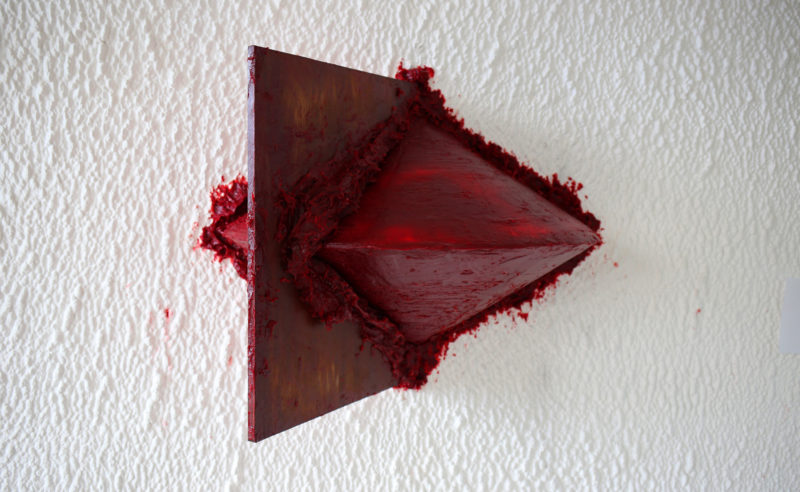
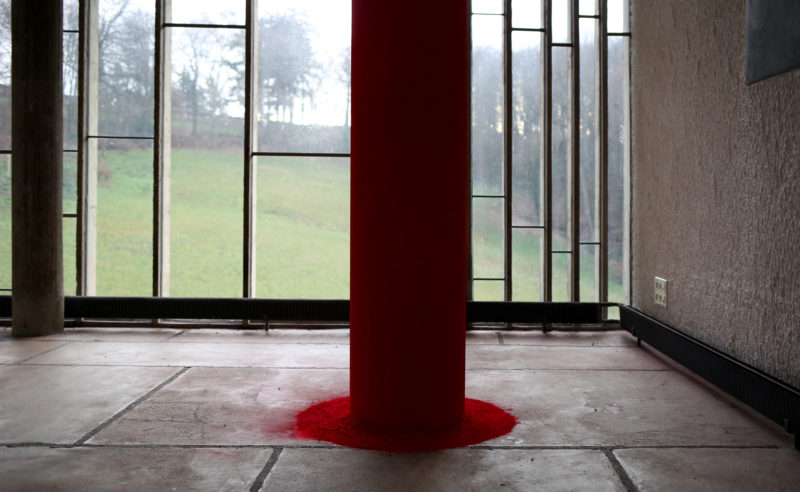
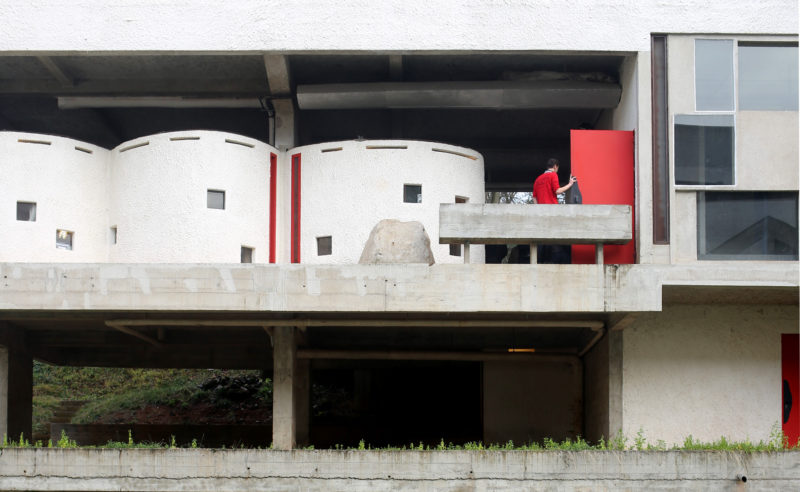
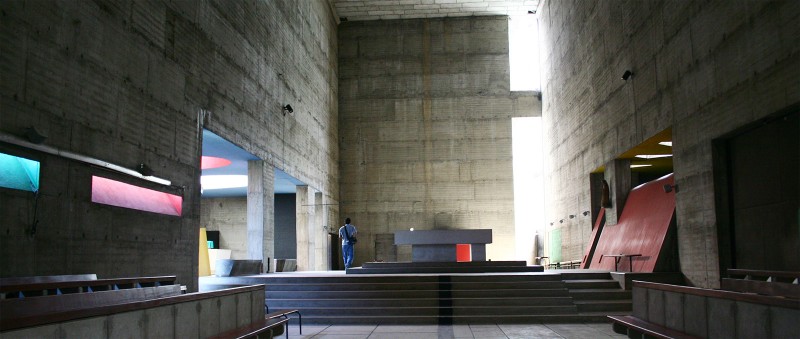
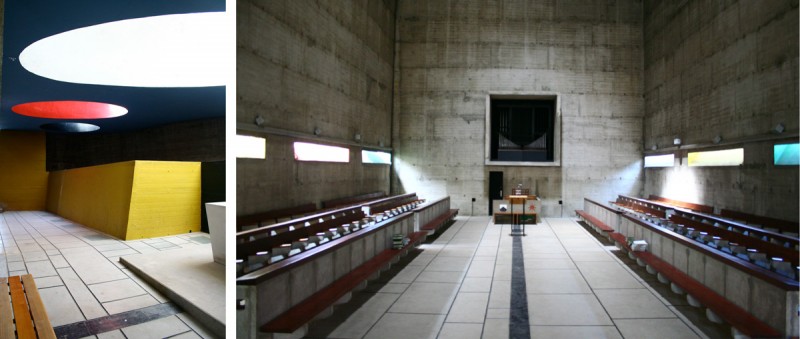
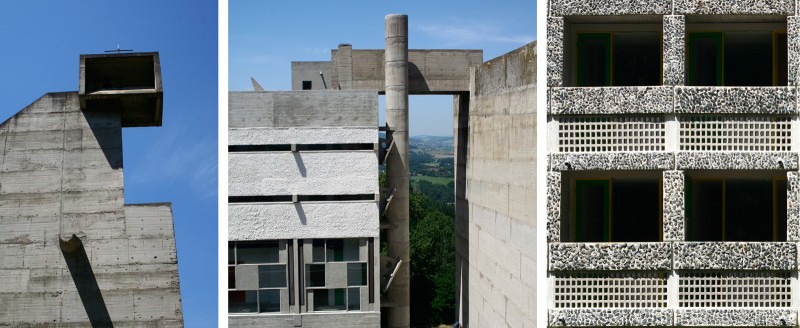
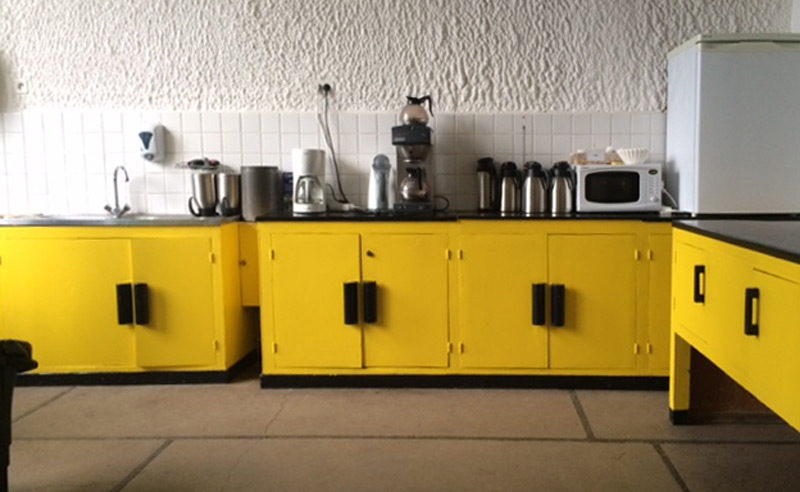
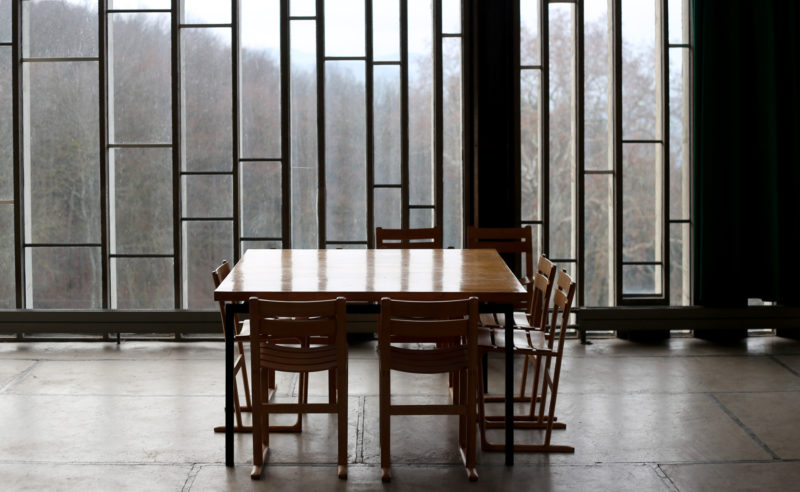
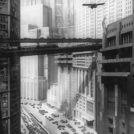
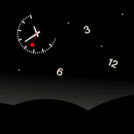
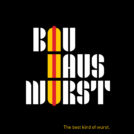
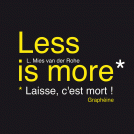

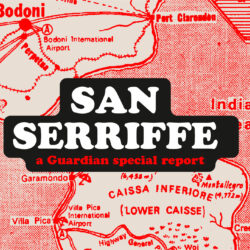 San Serriffe typographic Island
San Serriffe typographic Island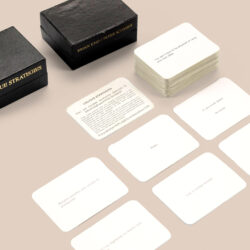 Design, creativity and oblique strategies!
Design, creativity and oblique strategies! Tote bag, a new social totem?
Tote bag, a new social totem?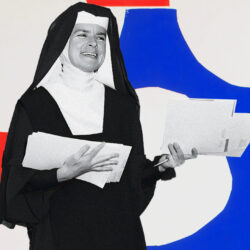 Sister Corita Kent, the Pop Art nun
Sister Corita Kent, the Pop Art nun Donald Trump, the martyr who makes history
Donald Trump, the martyr who makes history Euroconsult – Brand identity
Euroconsult – Brand identity Haras Annecy – Visual identity
Haras Annecy – Visual identity MNFCT – Visual Identity
MNFCT – Visual Identity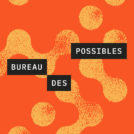 Bureau des Possibles – Visual identity
Bureau des Possibles – Visual identity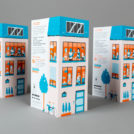 Paris Climate Agency – Leaflet design
Paris Climate Agency – Leaflet design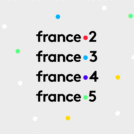 France Télévisions’ new visual identity. Period.
France Télévisions’ new visual identity. Period. A king-size stamp for Charles III
A king-size stamp for Charles III Donald Trump, the martyr who makes history
Donald Trump, the martyr who makes history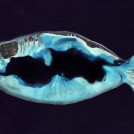 An island shaped like an April fool’s
An island shaped like an April fool’s We ❤️ Milton Glaser !
We ❤️ Milton Glaser !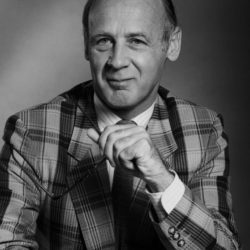

Leave a Reply